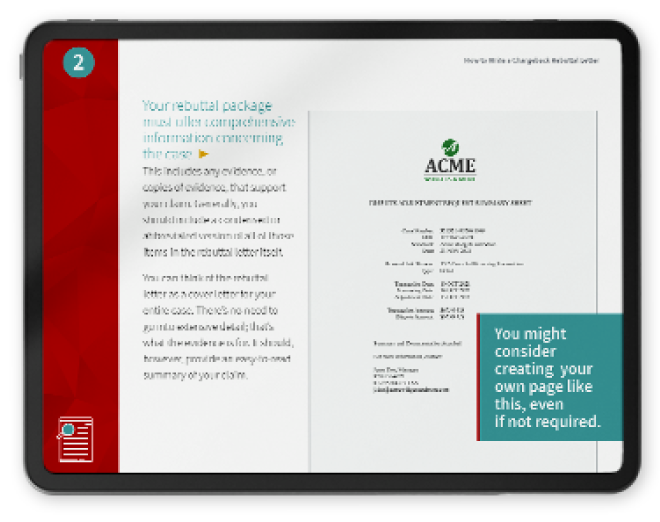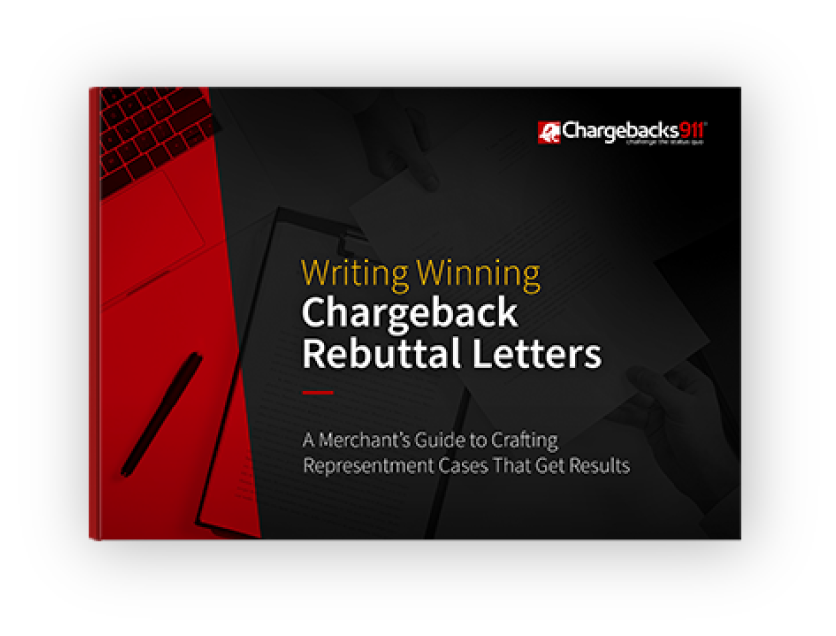Chargeback Recovery: Spotlighting How You Can Recover Revenue & Prevent Future Chargebacks
Chargeback management isn’t fun. We get it. If you’re like most merchants dealing with this problem, you’re probably just wishing that you could get your money back, and that chargebacks would simply go away forever.
Here's the truth: there is no magic solution for chargebacks. There is a very effective way to address, manage, and recover revenue from chargebacks that won’t break your bank, but it won’t necessarily be easy.
This article will explain what chargeback recovery really means, how you can get started, what you will need, and why it might be best to have someone show you the ropes.
Recommended reading
- Pre-Arbitration Chargeback Process: How do Pre-Arbs Work?
- Chargeback Rebuttal Letters: Templates & Tips for Responses
- Chargeback Reversal: 6 Simple Steps to Get Your Money Back
- Can You Dispute A Dispute? Yes — Here’s What to Do
- What is Compelling Evidence? Examples & Tips to Win Disputes
- How to Fight Chargebacks | Recover Revenue in 4 Basic Steps
Understanding Chargeback Sources: The First Step to Chargeback Recovery
When a dispute comes up, you have a small window of time in which to determine what caused it and whether you can fight back. The time frame, the evidence you need, and the method of submitting documentation depends on the reason code assigned to the case.
Each card network has its own system of chargeback reason codes that are meant to explain the cause of a dispute. Visa and Mastercard chargeback reason codes are different from one another. The same applies for other card networks like Discover and American Express.
Here’s the rub: reason codes aren’t as reliable as they seem. In most cases, chargeback reason codes may be concealing friendly fraud.
If you let friendly fraud go unchallenged, you will lose the revenue and any merchandise from the sale. You’ll also be forced to pay a chargeback fee. There’s much more at stake than just a single transaction, though. you could face severe consequences if your long-term chargeback-to-transaction ratio breaches acceptable industry thresholds.
Chargebacks can destroy your business. So, if you suspect friendly fraud, it’s your right—and your responsibility—to engage in chargeback recovery. This is the only way to deter negative customer behavior and recover losses.
Chargeback Recovery Through Representment
If a customer files a chargeback, but you can prove the original transaction was legitimate, then you can recover the funds from the initial sale. That alone should be enough reason to fight back.
If you’re still not convinced, though, the benefits of chargeback recovery go far beyond saving individual sales:
BENEFIT #1 | ENSURE CASH FLOW
Every dollar lost to chargebacks is a dollar clawed back from your bank account. That's bad, obviously. It will be much worse if you breach your chargeback threshold, though. Your acquirer might freeze or even terminate your account without warning, making it impossible to cover expenses like inventory and payroll.
Fighting—and winning—your disputes will increase your net income. It will also protect your bank balance and reduce your risk of running into cash flow problems.
BENEFIT #2 | LONG-TERM PREVENTION
Chargeback recovery doesn’t happen in a vacuum. Whether you see it or not, each dispute you win does have an impact.
When you fight back against friendly fraud, it encourages issuers to give you the benefit of the doubt in future disputes. You develop a positive reputation for taking friendly fraud to task and defending your business. This will, eventually, lead to fewer disputes making it all the way to the chargeback stage.
BENEFIT #3 | ENCOURAGE WIDESPREAD REFORM
Representment offers you a counterbalance to a system that needs to be checked. If no one stands up to say, “the rules are broken,” then there will be no incentive for anyone to do anything that might address friendly fraud and other issues.
If more merchants start fighting back, then the card schemes will sit up and take notice. This was already demonstrated with the Visa Claims Resolution initiative introduced in 2018. With the Visa Order Insights plugin, you have a powerful tool to instantly eliminate a full segment of your chargebacks.
Visa and Mastercard have made significant steps to help manage chargebacks. However, even the most forward-thinking moves still fall short of the mark regarding friendly fraud.
Until banks and payment service providers offer better protections, representment remains your best chance to recover from chargebacks. Once you’re determined to fight back, your next step is to gather evidence.
Representment Demands Documentation
If you’re confident that a dispute is friendly fraud, your first step toward chargeback recovery is to prepare your response.
Failing to respond promptly means you lose your ability to fight the chargeback. Depending on the circumstances (i.e. the card network involved and the reason code assigned), failure to engage may mean getting hit with an added penalty fine on top of the chargeback fee.
There are two critical components to your second presentment package. First, you need to craft a chargeback rebuttal letter. You must also provide compelling evidence and other supporting documentation.
These documents have a complementary relationship. Your evidence contradicts the customer’s claim, while the rebuttal letter makes your case and provides context to the evidence. When combined, they should be strong enough to convince the issuer to decline the chargeback.
Here are some examples of commonly-used pieces of evidence which might help you recover chargeback losses:
A legible copy of the sales receipt
Order forms
Tracking information or delivery confirmation
Transcripts of any communication between yourself and the customer
Forms bearing the customer’s signature
Ancillary purchases or requests
Records from previous transactions
Of course, there’s no perfect formula to gather evidence for your case. The documentation you need will depend on the customer’s claim, and you need to build your case to reflect that. Also, just as your compelling evidence needs to be based on the dispute, your rebuttal letter needs to be based on your evidence.
Essential Tips to Improve Your Chargeback Recovery Odds
Chargeback recovery through representment is not impossible...but it’s not easy.
You have to gather the best and most accurate evidence you can, and know how to present that information effectively. You also need to keep the deadline for presentation at the forefront of your mind; the bank will not accept late documents.
Looking to stack the odds in your favor? Consider the following tips for your next representment:
- Know and understand the most current applicable chargeback representment regulations before a dispute happens.
- Develop a system—and all necessary integrations—to collect and organize essential documents so they can be located quickly.
- Stay current on all the most recent, specific reason codes for each card network. This way, you’ll know what documents to submit.
- The rebuttal letter is the cornerstone of your representment case. Keep the wording clear, concise, and professional.
- Avoid automated systems. They can streamline the process, but their inflexibility will mean incomplete or inaccurate responses.
- Consult with multiple banks to determine the best way to respond. Pattern your cases based on what you learn.
- Respond to every illegitimate dispute. This is the best way to maximize revenue retention and protect your reputation.
Finally, and most importantly: do the follow-up.
It can be hard to obtain—let alone analyze—your representment results. You have to track patterns, risks, and key performance indicators (KPIs). You have to learn what is or isn’t working and how much ROI you’re receiving.
Chargeback Recovery: An Uphill Battle
If any of this sounds overwhelming, don’t worry…you’re not alone.
As mentioned above, representment is a complex, time-consuming process. Even large companies with bottomless pockets and a dedicated staff can have trouble with chargeback recovery. If you’re like most merchants, you probably don’t have the time, resources, or expertise to do it right.
The 2021 Chargeback Field Report suggests that merchants only win about one in eight chargeback disputes. While the average merchant win rate stood at 42%, the average net recovery rate for chargebacks was just 12%. If we also consider that roughly six in ten chargebacks are cases of friendly fraud, that means merchants are leaving a lot of money on the table.
It’s not all bad news, though. Many businesses could actually see much better recovery rates, if they have help from professionals that know chargeback management inside and out.
The Solution for Chargeback Recovery is Simple
Chargebacks911® gives you the freedom to grow your business without worrying about your dispute response.
We deploy a proactive strategy based on Intelligent Source Detection™ technology. Our approach combines machine learning technology with human forensic expertise, delivering optimal chargeback recovery.
We fight and intercept chargebacks for short-term recovery while applying machine learning tools and human forensic expertise for long-term chargeback reduction.
There’s a reason Chargebacks911 is the top name in chargeback recovery: we were doing it before—and doing it better than—anyone else.
Chargeback recovery is hard. The solution is easy. Click below to see how much you will save.














